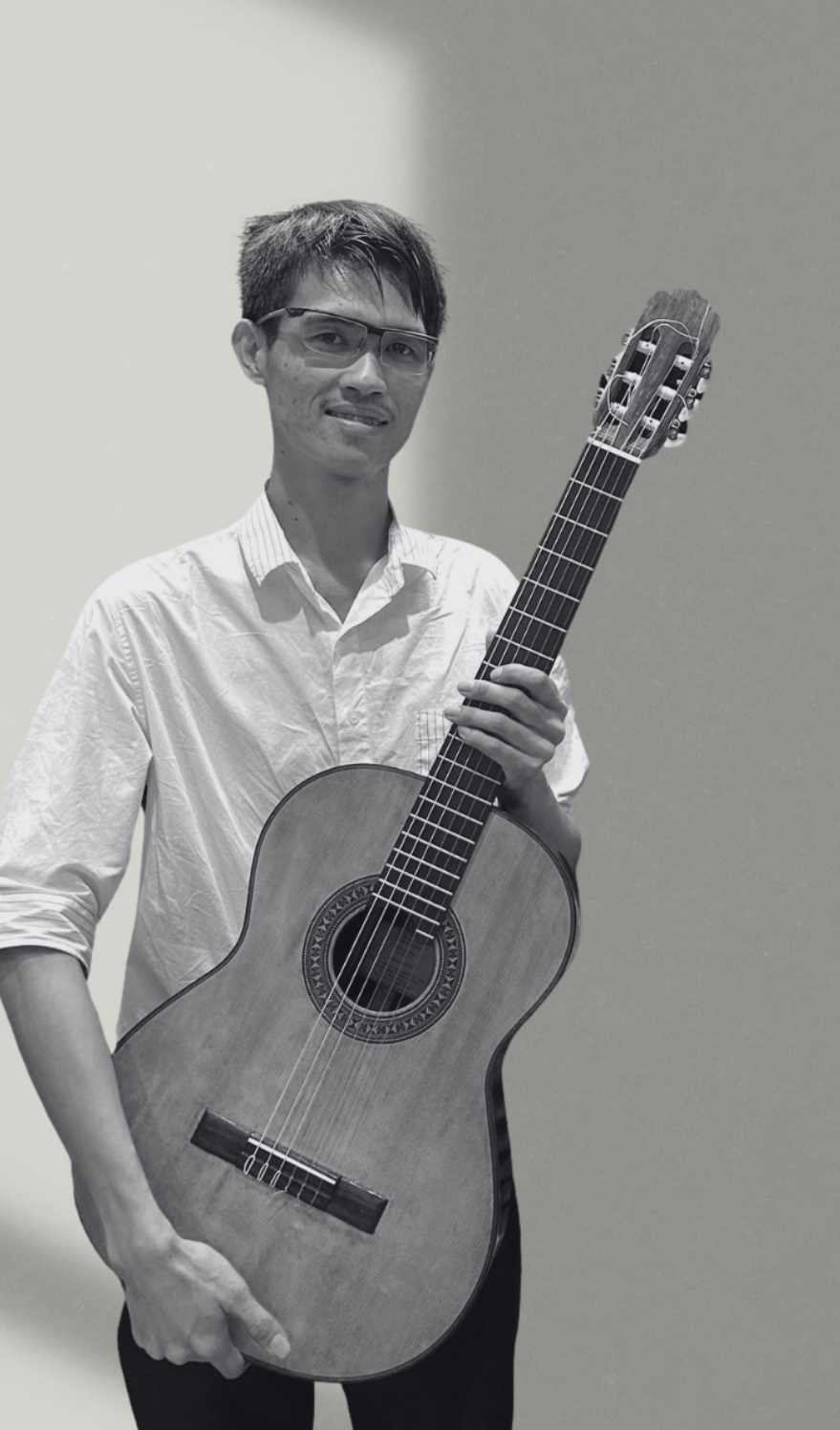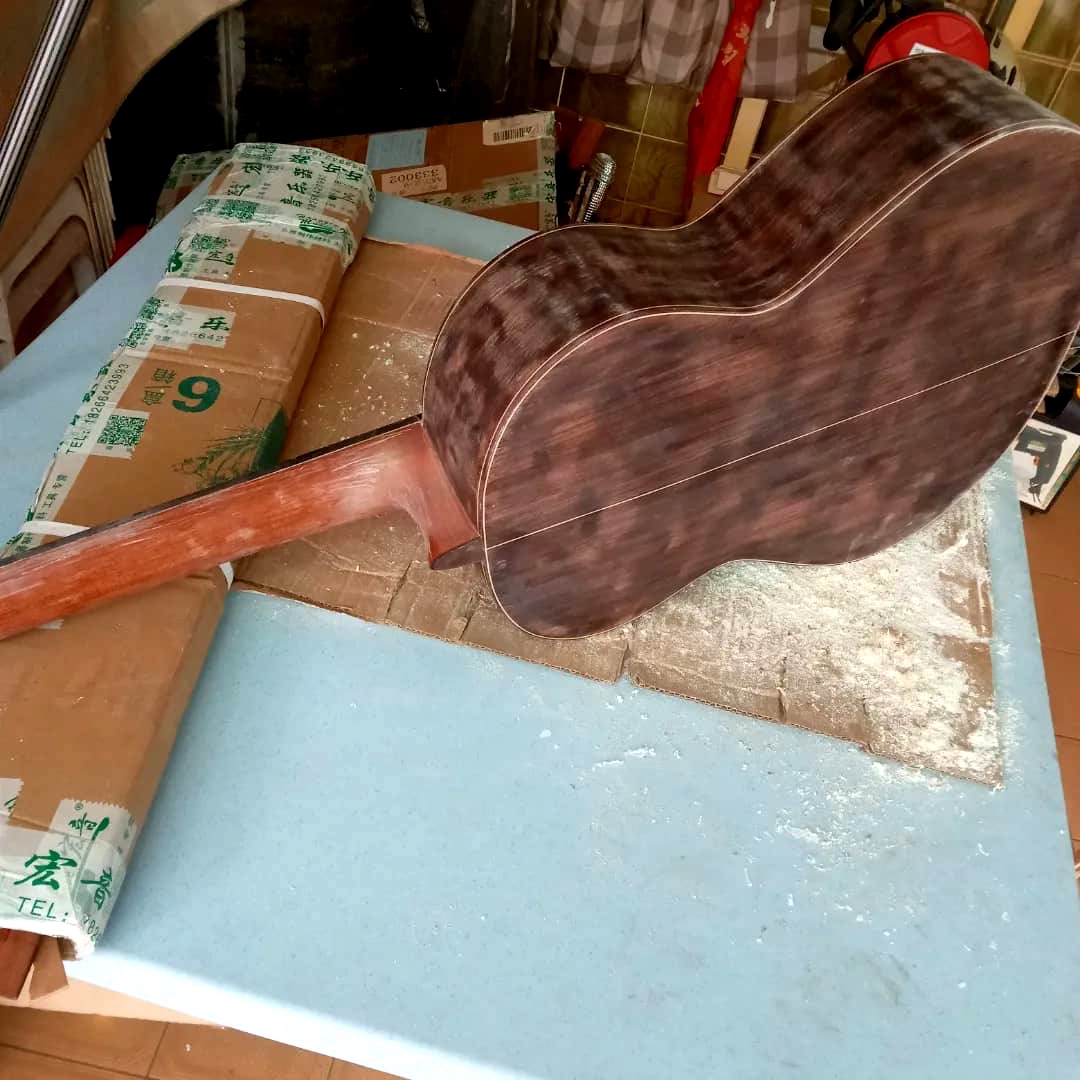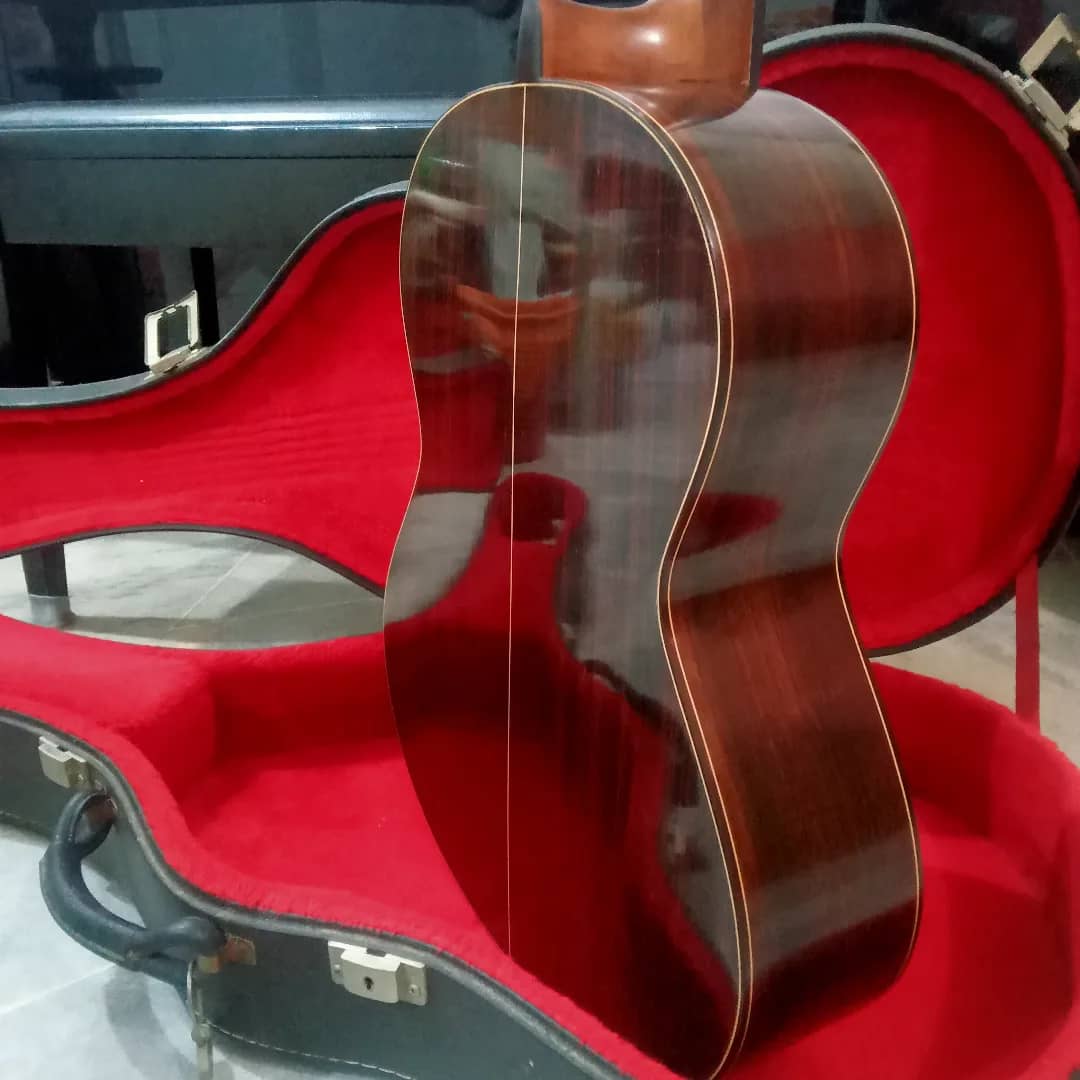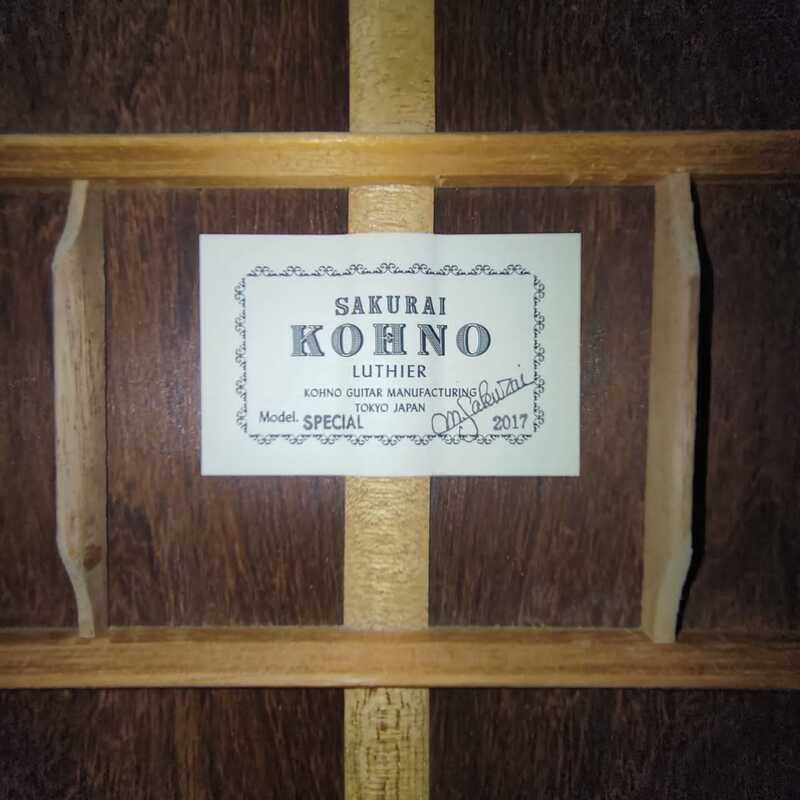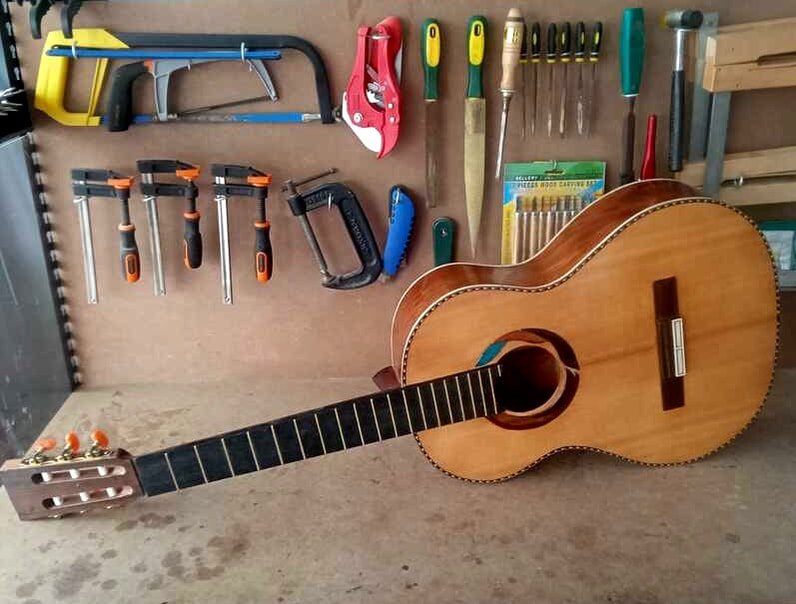I am always trying to build a better instrument and I can share the beauty of the instruments I build with my understanding of the art of music and the guitar. My knowledge as a guitarist and a performer will also help me in developing my craft as a luthier. To that end, I have chosen to fulfil the roles of both luthier and guitarist. Malaysian luthier Lee Kuan Lim wants to be a guitarist. Or would it be more accurate to say the guitarist wants to be a luthier? Probably neither, as his choice is a lot more nuanced. His interest in the guitar began when he was just 10 years old, when he watched finger-style guitarists Andy Mckee and Tommy Emmanuel in action on television.
“Andy Mckee played a piece called Drifting while Tommy Emmanuel performed Classical Gas. Their performances were shown on television and I was inspired by their musicianship, which led me to my desire to learn the classical guitar,” says Kuan Lim, who also describes himself as a classical guitar teacher. But when I first met him at a gathering of classical guitarists in a music school called Chillax Music in Kuala Lumpur, the Malaysian capital, he was introduced to me as a guitar luthier.
“While learning how to play the guitar, I became curious as to what makes an instrument sound good and so I started to do my own research and learnt that the use of different materials and dimensions in the construction of guitars affected their tone,” he explains. “This, and my interest in woodworking, resulted in my starting to build guitars as a hobby.” According to Kuan Lim, who is 26, he learnt the guitar from various teachers at different music schools because he wanted to gain more knowledge and experience from a variety of sources. Which seems to work very well for him as he now holds a diploma in performance and group performance from the Australian Guild of Music and an ABRSM cert for music theory, and is currently deciding which UK syllabus to pursue for his next certificate. Meanwhile, in his quest to become a better luthier, he discovered and purchased books on guitar construction, essentially teaching himself through trial and error in the traditional and contemporary methods of guitar building, improving as his expectations ascended.
“From each step of learning, and each step of construction, there are ideas that get refined during the process of construction as I work towards getting the sound of the guitar that I want,” says Kuan Lim. He has to date built fewer than 10 guitars, but he remains unfazed by the somewhat small output as he focuses on getting the ideal tone while also servicing and repairing guitars and striving to attain proficiency as a performer. However, his eclectic and experimental approach in gathering knowledge may have led him to make an important discovery in guitar construction – he has developed an enhancement which he calls the “Twin Vertical Back Bracing Struts”, which is supposed to improve the tone of existing guitars. “Each guitar would have a weak-sounding note or more. Having this addition – the twin vertical back bracing struts – will improve the sound of the weaker notes, improving their dynamics and clarity, along with better sustain. The back struts will also give the guitar better tone and projection in general,” Kuan Lim explains.
He discovered the workings of such a bracing method by accident: while putting his mobile phone with the light on inside a guitar to study the bracing, he noticed that the tone of the instrument improved. But when he removed the mobile phone, the guitar reverted to its original tone. “I noticed the sound was better when there was the weight exerted on a specific part of the inside-back of the guitar,” says Kuan Lim. So he devised the struts to replicate the pressure on the back. He showed me how it worked at our meeting in KL – two detachable pieces of wood inserted into the inside back of the guitar. When they were in place, the guitar, which was his own build, sounded clearer, with the bass especially becoming markedly more focused. “It works on guitars with traditional fan bracing,” says Kuan Lim, adding that he has used this enhancement with success on several Sakurai guitars that were brought to him for servicing. It must have been a thrill for the budding luthier to make improvements on the creation of a master he admires. “Yes, I admire Masaki Sakurai the most out of all luthiers. He studied the importance of the soundboard which is largely responsible for the quality of the sound, he refined and improved it to create a new bracing system. Sakurai’s bracing provides greater responsiveness for the soundboard projection, and achieves a better balance and intonation,” says Kuan Lim of the winner of the first prize of the prestigious Paris Competition for luthiers in 1988. “I have never met him but I do hope to have such an opportunity. I am still discovering his ideas and thoughts from his work, and am seeking a better understanding of the sound of his guitars.” Like the eminent luthier he so ardently admires, Kuan Lim is now working towards creating a guitar with traditional bracing, but with his own innovations. He uses an asymmetrical bracing system which he says will bring out the best tone from the tonewood of the soundboard while providing for a broader spectrum of tone colours.
“Having an asymmetrical bracing will give more balance between the treble and bass. It will also make the bass deeper and the higher trebles clearer, with a clearer separation of notes and a more distinct division between bass and treble,” he says. With all the research and trials he has done on creating guitars, would he consider relinquishing his pursuit of being a performer in favour of becoming a better luthier?
No, says Kuan Lim. It’s not that he cannot decide. He feels that a polyphony of pursuits would resonate with his ambition. “I have already taken time to decide which path to take, and I have decided that doing both will be in harmony with each other. I am always trying to build a better instrument and I can share the beauty of the instruments I build with my understanding of the art of music and the guitar. My knowledge as a guitarist and a performer will also help me in developing my craft as a luthier. “To that end, I have chosen to fulfil the roles of both luthier and guitarist.” While Kuan Lim leans towards the traditional build as a luthier, the multi-hyphenate would definitely be a “double” top – if he were a guitar. |
YOU MAY LIKE
|
OPEN STUDIO
The Classical Guitar Life A 45-minute showcase followed by a short talk + discussion on how the guitar can be a rewarding hobby. Includes explaining matters such as changing strings, guitar cost and maintenance. This programme is suitable for those interested in the classical guitar, including young adults. Registration opens now. |

